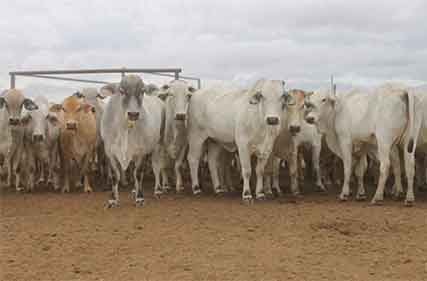 The Agricultural Business Research Institute (ABRI) has announced Australian Brahman breeders are set to benefit from a number of significant BREEDPLAN software enhancements, released with the November 2024 Brahman Single-Step BREEDPLAN analysis.
The Agricultural Business Research Institute (ABRI) has announced Australian Brahman breeders are set to benefit from a number of significant BREEDPLAN software enhancements, released with the November 2024 Brahman Single-Step BREEDPLAN analysis.
These enhancements improve the predictive ability of Brahman BREEDPLAN, ensuring that Brahman BREEDPLAN continues to make the best use of the pedigree, performance and genomic information being collected by Australian Brahman Breeders’ Association members.
These enhancements include:
- Re-estimation of adjustment factors and genetic parameters: A complete re-estimation of genetic parameters for traits reported in the Brahman Single-Step BREEDPLAN analysis has been completed. With the current parameters last estimated some years ago, the latest parameter estimates are based on a significant increase in performance records, particularly for reproduction and carcase traits. For some traits, this is the first time that Brahman-specific parameters have been estimated. This has been made possible due to the commitment of the Australian Brahman Breeders’ Association and their members, who have invested significantly in performance data collection through large-scale industry projects such as the Repronomics and the Northern Steer BIN projects. The parameter re-estimates have included changes to trait heritability estimates (the percentage of variation in a trait that is explained by genetics), with the largest heritability changes observed for Birth Weight, Gestation Length, Mature Cow Weight and the carcase traits. The genetic correlations between all traits were re-estimated. For Age at Puberty, Percent Normal Sperm and Gestation Length this was the first time that the relationships with all other traits were estimated. The parameter re-estimation has allowed IMF ultrasound scan data for heifer and steers (but not bulls) to be re-included in the calculation of IMF EBVs. Finally, the Carcase Weight EBV endpoint has been extended from 650 days to 850 days, to better reflect the actual age at which Brahman animals are slaughtered. This has led to a greater spread in the Carcase Weight EBVs observed for the Brahman breed.
- Increased weighting on genomic relatedness information in Single-Step BREEDPLAN: The relative emphasis given to pedigree relatedness versus genomic (DNA) relatedness information in the Single-Step BREEDPLAN evaluation has been modified so that stronger emphasis is given to the genomic relatedness. Some changes in the EBVs reported for individual animals are expected, especially for those with a genotype but no performance records. These outcomes will vary across traits. Please note that the value of performance data within the BREEDPLAN analysis remains unchanged. Performance data remains an important source of information to the BREEDPLAN analysis, and, given the need for a reference population of animals with both performance data and genomic information, one which is vital to the ongoing success of Single-Step BREEDPLAN for the Brahman breed.
- Updated trait weighting for Selection Index calculations: Given the BREEDPLAN evaluation updates presented above and resulting impacts on genetic parameters and EBVs the emphasis placed on each EBV in the Live Export and Central Production Brahman selection indexes has been updated to maintain the intended purpose of each index. This update has been undertaken to bring the indexes into alignment with the changes in genetic parameters, particularly those genetic relationships between traits which have been estimated for the first time. Given the higher accuracy of the EBVs now available from these changes the indexes are in a position to provide more accurate selection for the intended purpose of each index.
Brahman breeders can expect to see changes in EBVs, accuracy and selection index values as a consequence of these enhancements to the Brahman Single-Step BREEDPLAN analysis.
These enhancements have been possible thanks to the work of scientists at the Animal Genetics and Breeding Unit (AGBU), a joint initiative of the University of New England (UNE) and the NSW Department of Primary Industries (NSW DPI), with funding from Meat and Livestock Australia (MLA).
-ABRI
